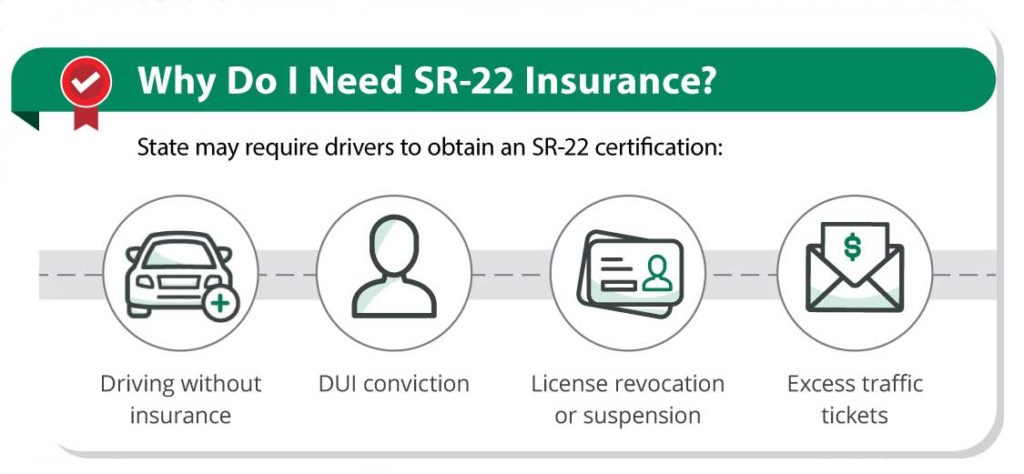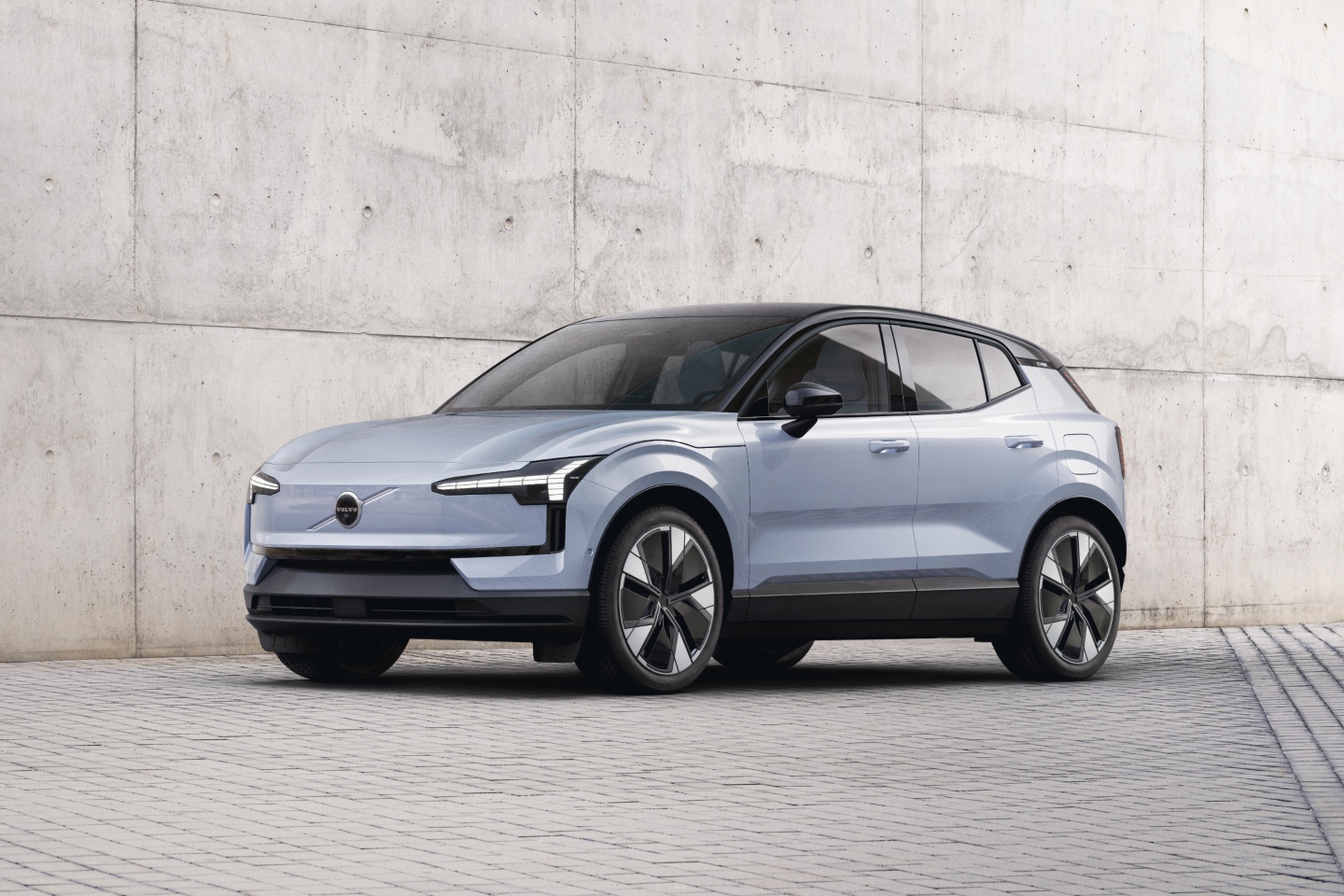
Three figures relating to this car, which is the all-new Volvo EX30, caught my eye. The first relates to its potential speed, and it has some potential in that regard. There was a time when Volvos were square and slow. Not anymore, though. Bearing in mind that the EX30 is a small SUV – smaller than the XC40 and, at 4,233mm, only a wee bit longer than a Ford Fiesta – perhaps the last thing you might expect to hear is that this is the quickest-accelerating Volvo, ever. But it is. The top-spec Twin Motor Performance model, with its dual motors producing a combined 428hp and 401lb ft, will kapow you from 0-62mph in 3.6 seconds. It’s worth reiterating: that figure is for a small, Volvo SUV, not a cruise missile.
The Twin Motor Performance also has a potential range of 286 miles. That’s thanks to its 69kWh battery (usable capacity of 64kWh), which is an NMC battery constructed of lithium, nickel, manganese and cobalt. The same battery can provide even more miles, though. There’s a potential 298 miles on offer if you go for the Single Motor Extended Range version. It uses the same rear-mounted, 272hp motor as the Performance, but does without the additional motor on the front axle. Even so, this ‘non-performance’ model can still do 0-62mph in 5.3 seconds. Both the 69kWh battery models can charge at up to 153kW, meaning a 10 to 80 per cent boost in 28 minutes.
For the city dwellers, there’s a smaller battery option. It’s aimed more at those who make shorter trips and, therefore, don’t need to lug around a huge battery. It’s called, simply, the Single Motor, and has a 51kWh battery (49kWh useable) giving it a range of 214 miles. More interestingly, this is an LFP battery. LFP is the newer style of lower-cost battery for cars. Lower cost in terms of pounds, shillings and pence, and the environment, because it’s cobalt free and less toxic. LFP batteries have other advantages, too, like better safety and a longer life cycle, but currently don’t have the same energy density as NMC batteries. This one doesn’t charge as quickly as the bigger NMC battery in other EX30s (up to 134kW) but, thanks to smaller battery capacity, it’ll still go from 10 to 80 per cent in 26 minutes. The Single Motor model also uses the rear-mounted 272hp motor and hits 0-62mph in 5.7 seconds. All EX30s are limited to the same 112mph top speed.
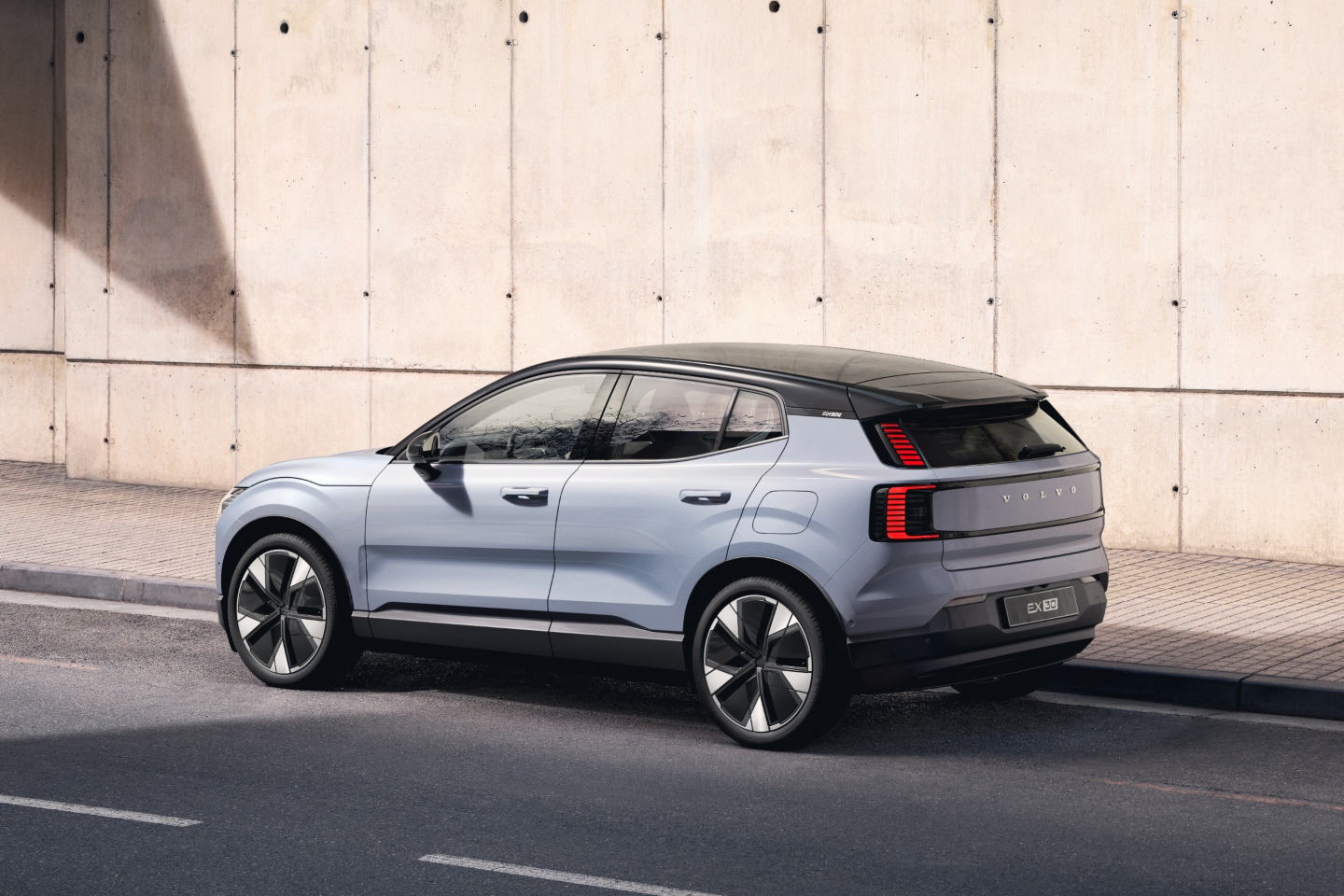
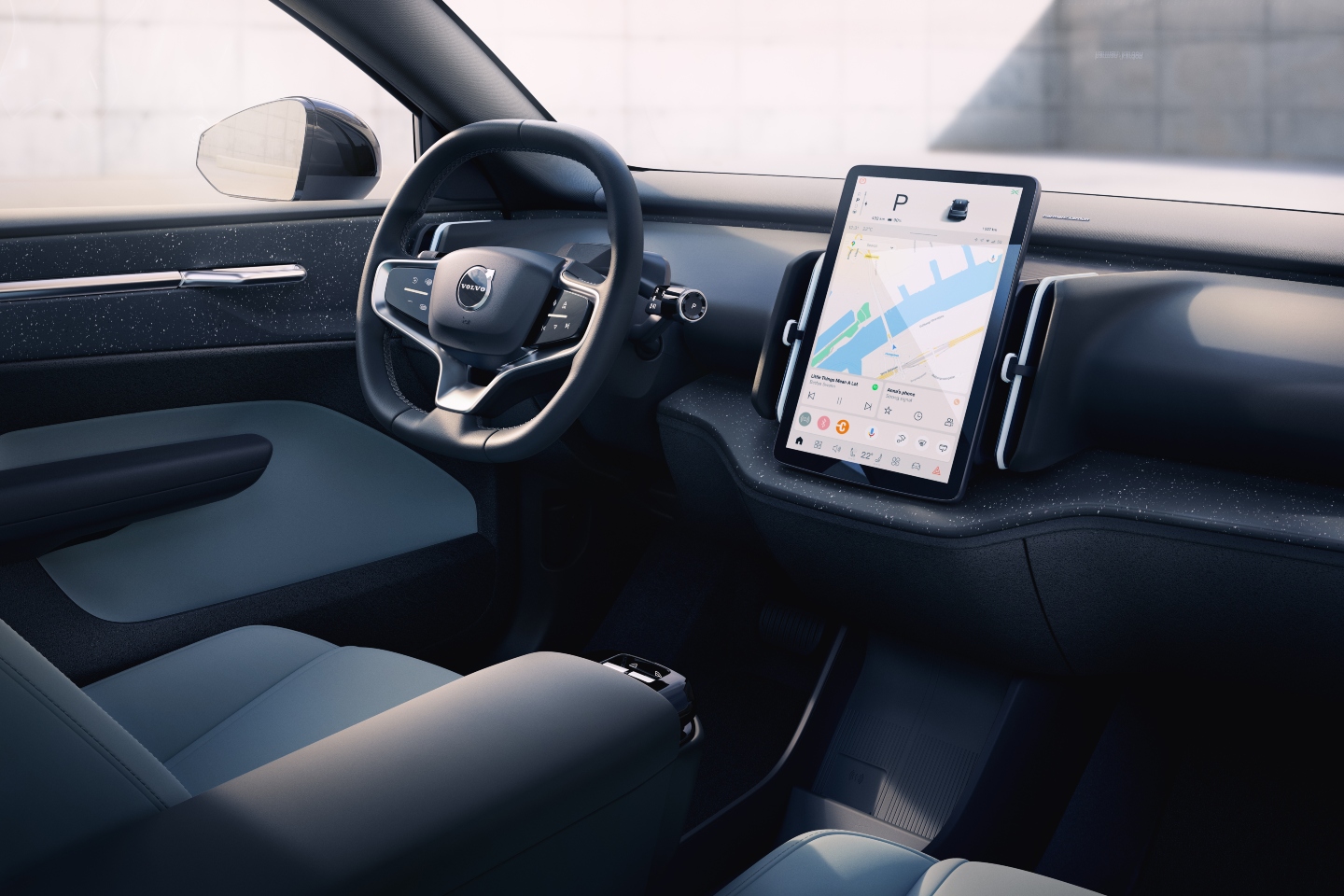
If the Twin Motor Performance’s banzai acceleration is the first noteworthy point, the second is the EX30’s Single Motor’s price. Sifting through all the bumf, it turns out you can order one right now and it’ll cost from £33,795. Obviously, that’s the smaller battery in the lowest of the two available trims – those are Plus and Ultra – but that’s not bad, is it? It’s less than a top-spec Fiat 500e, which is currently £34,195, and the EX30 is a roomier car with a greater range than that. And there’s more, too. Later on Volvo will add a third, even cheaper trim, called Core. That’ll bring the price of the EX30 down to around £31,000, which puts it bang in the mix with some of the cheaper EVs on the market – cars such as the MG ZS, Mini Electric and Renault Zoe.
It’s fair to say it’s good value, then, especially because it’s relatively well-equipped. The Plus trim includes dual-zone climate control, heated front seats, heated steering wheel, wireless charging, powered tailgate and adaptive cruise with Pilot Assist. On the infotainment front, the EX30 has a 12.3-inch portrait touchscreen with Apple CarPlay, while Android services are inbuilt because the interface, as with all the latest Volvo and Polestar products, uses Android-based software. There’s also a 1,040-watt Harman Kardon sound system fitted as standard, and access to the Volvo Cars Services app that connects you to your car remotely. Updates can be sent to the EX30 over-the-air, so expect its features to be improved and others added during the car’s life.
The Ultra trim looks less appealing. It starts at £42,045 for the Extended Range and tops out at £44,495 as the Performance. All you get in additional equipment, though, is privacy glass, a panoramic roof, 20-inch wheels, powered front seats, a 3D camera and automatic parking. To be fair, that is able to seek and fit into pretty much any parking space, including parallel, curved, perpendicular and even diagonal fishbone-style spaces.
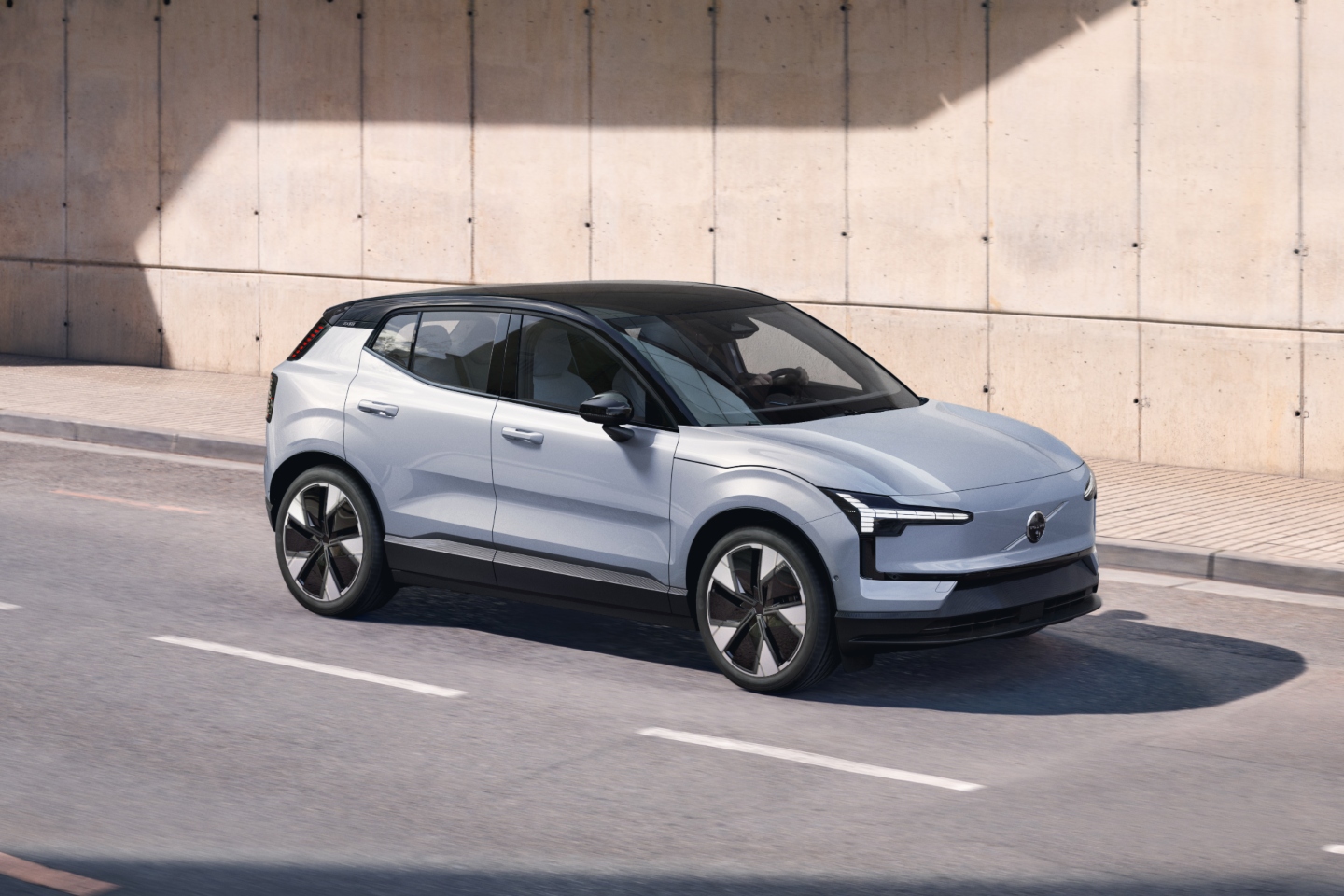

Inside, the EX30 is typically Volvo. Which is to say, classy, minimalist, and with what looks to be snazzy selection of materials. Not only does it look good inside (from the pictures at least) but where possible the materials have been selected for minimal impact on the environment. This brings me onto the last of the three noteworthy figures. Volvo says that the EX30’s end-to-end CO2 output, which includes production, fuel and disposal, is less than 30 tonnes over 200,000km. That’s 25 per cent less than an XC40.
I like Volvo’s approach of being straight with buyers, as much as possible, about the realities of EV ownership. Rather than simply pretending that EVs are an environmental panacea, Volvo is happy to admit the environmental costs involved. As one Volvo representative told us: ‘In being transparent about the lifecycle footprint of our fully electric vehicles, we aim to encourage greater transparency within our industry on the true carbon impact of EVs and help consumers to make informed buying decisions’. Amen to that.
We don’t have the full breakdown for how the 30-tonne figure was arrived at – the final, externally verified figures will be made available in the EX30’s Lifecycle Carbon Assessment (LCA) report later this year – but we do know the CO2 for its charging was based on the EU27 mix of energy production. That’s still quite heavy on coal and gas, so in a country with more renewables in the mix, it would potentially be less CO2 polluting.
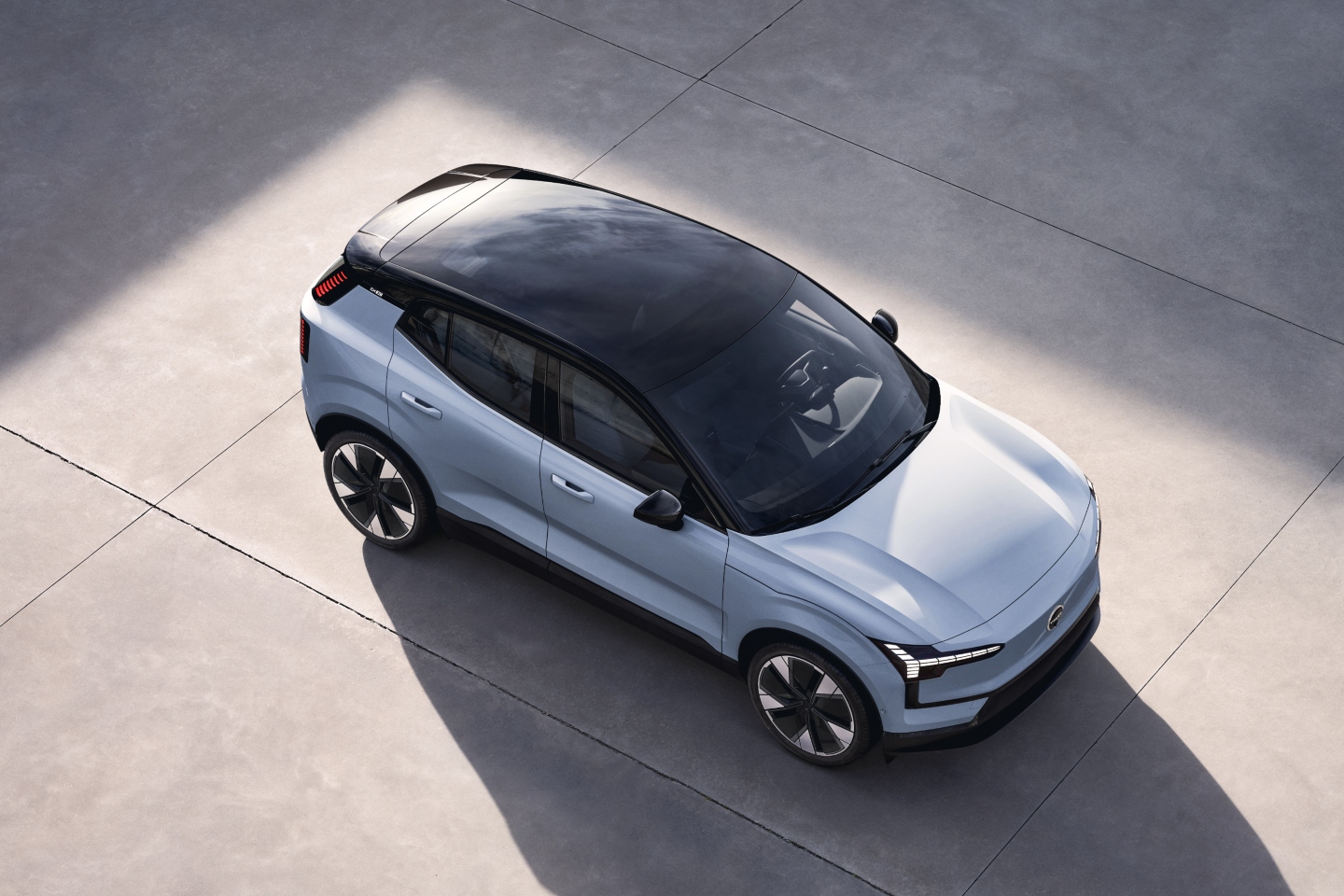
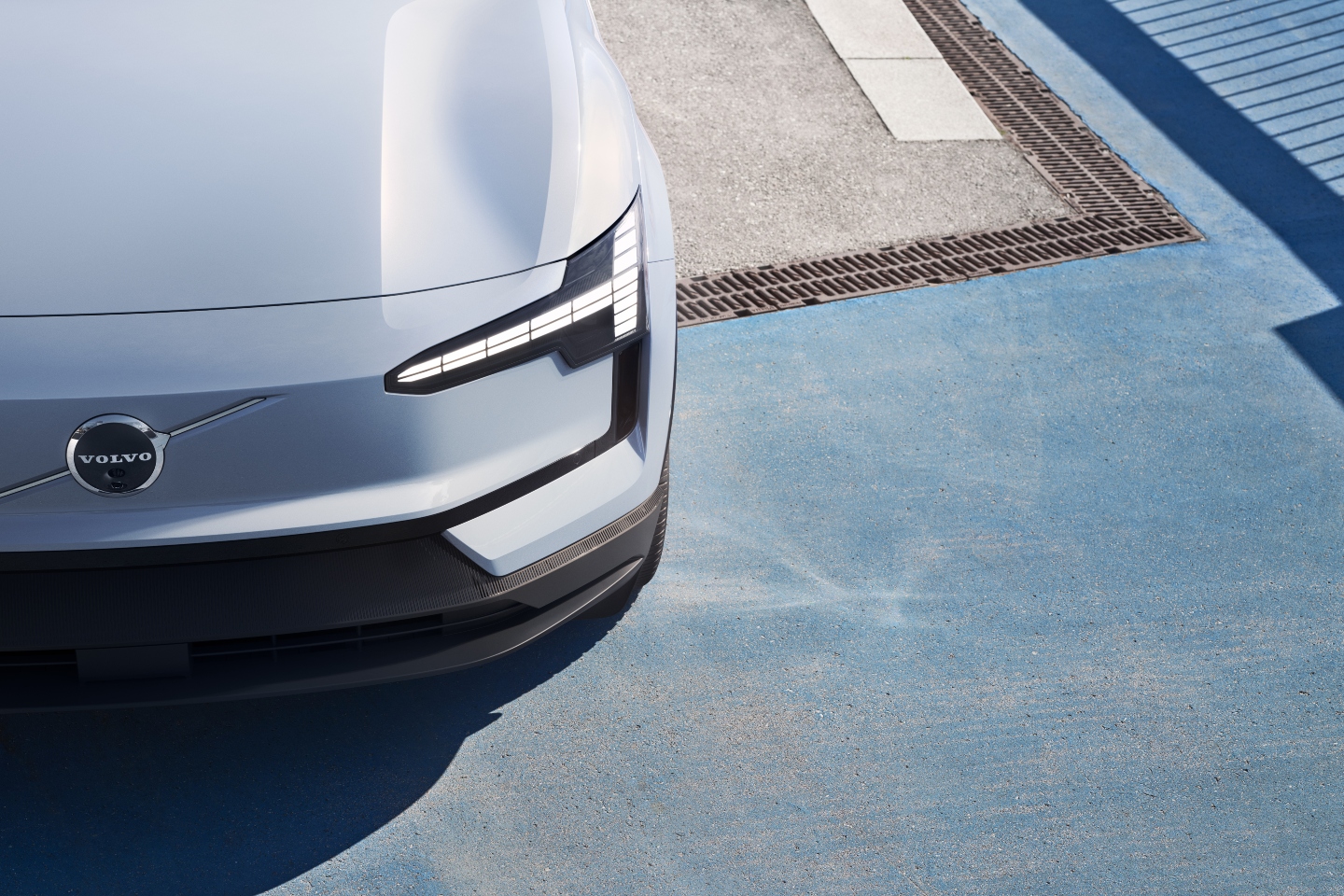
Anyway, just to have a little play, rather than be truly scientific about it, I thought I’d ask Deep Thought – or ChatGPT as you may know it – what the whole life CO2 cost of regular car would be. The regular car it chose turned out to be a Toyota Prius, which I told Deep Thought isn’t very PH, but it told me, ‘Shut up, you insignificant globule of organic crud’. Bit rude. Anyway, its answer on how many tonnes of CO2 a Prius would produce over the same 200,000km was…28.7. So, less than this small-battery EV, then.
I know this is all a bit pie in the sky, bearing in mind there are all sorts of unknowns and variables when comparing both these figures, but it does highlight what I believe to be an interesting question: how much are EVs actually saving us in CO2? Will we actually look back on 20 years or so, and conclude with added to, rather than removed CO2 from our environment as a result of change? The answer to that question will have to wait for another day, but the answer to the question of whether the EX30 widens the choice at the cheaper end of the EV market looks to be a ‘yes’.
The only chink in the EX30’s apparently very sensible armour would appear to be the mooted Cross Country version. Now, it does seem a bit ridiculous that you launch a Cross Country version of an SUV – a car that’s already meant to cross countries. But, nevertheless, Volvo says that there will likely be an EX30 CC in 2024. This will have extra ground clearance, black 19-inch wheels, skid plates and black panels front and rear.
#Allnew #EX30 #fastest #accelerating #Volvo










